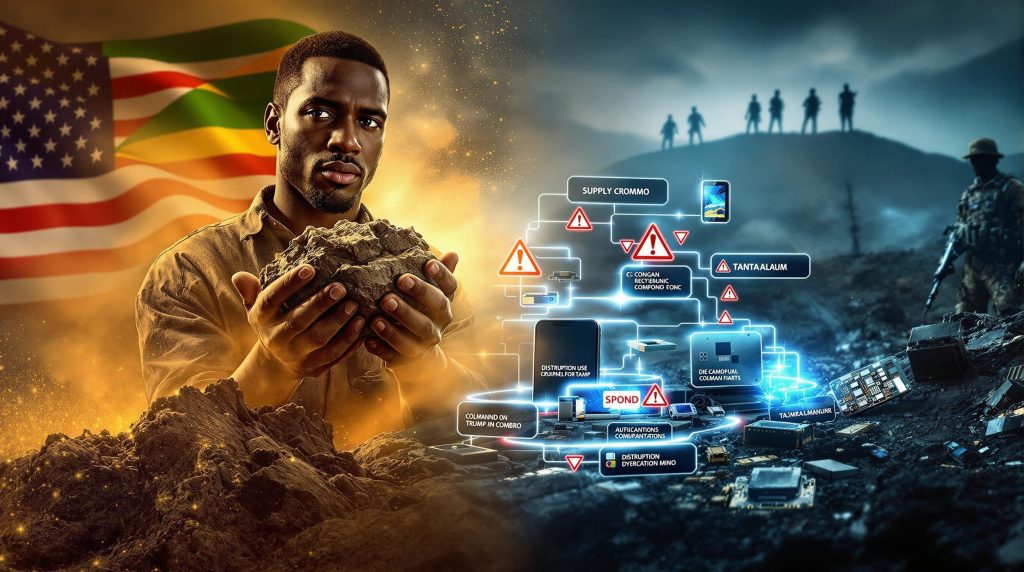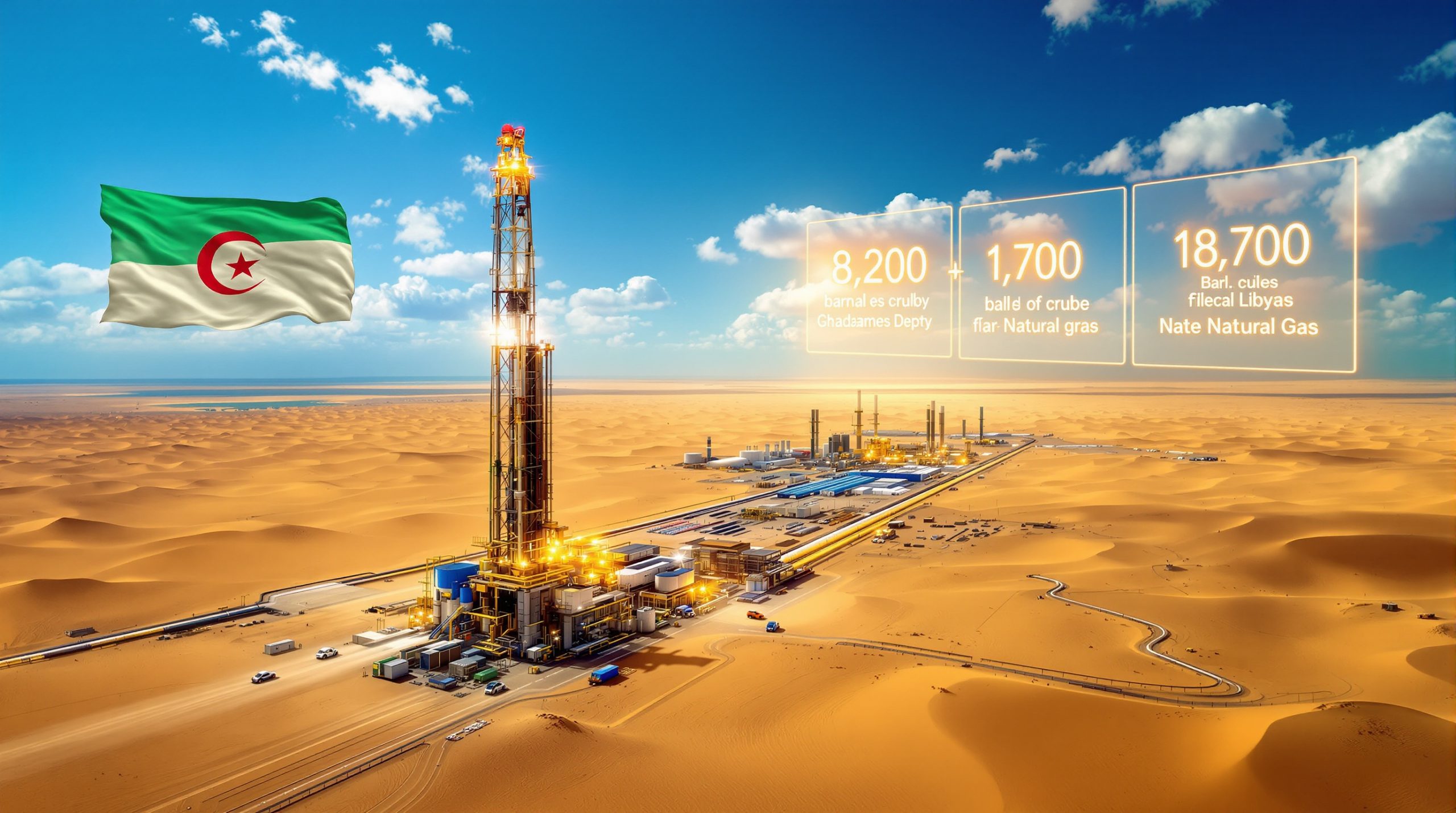Congolese Mining Conflict: US Sanctions and Corporate Responses
The conflict-ridden Democratic Republic of Congo (DRC) faces new international scrutiny as sanctions target key players in its mineral-rich eastern regions. This complex situation highlights the ongoing challenges at the intersection of valuable resources, armed conflict, and global supply chains, particularly regarding critical minerals energy security.
What Are the Recent US Sanctions Targeting Congolese Mining Operations?
The United States Treasury Department imposed significant sanctions on several entities involved in the Democratic Republic of Congo's mining sector on August 13, 2025. These measures specifically target operations in the strategically important Rubaya region, known for its abundant mineral resources.
The sanctions affect four main entities:
- Cooperative des Artisanaux Miniers du Congo (CDMC), a prominent Congolese mining company
- Coalition des Patriotes Resistants Congolais-Forces de Frappe (PARECO-FF), an armed group allegedly aligned with Congo's military
- Two Hong Kong-based mineral exporters allegedly involved in facilitating illicit mineral trade
These actions represent Trump's order on critical minerals and his administration's continued efforts to address persistent violence and mineral smuggling in eastern Congo, where critical minerals essential to global technology supply chains are extracted.
According to the Treasury Department, these sanctions aim to disrupt the financial networks that perpetuate conflict in the region. By targeting both armed groups and commercial entities, the US government seeks to break the connection between mineral wealth and ongoing violence.
Background on the Sanctions Decision
The sanctions follow months of investigation into mineral supply chains originating from eastern Congo. US officials point to evidence suggesting that these entities have profited from minerals extracted under conditions of conflict and human rights abuses.
The Treasury Department's Office of Foreign Assets Control (OFAC) designation means these entities' assets in the US are frozen, and American individuals and companies are prohibited from conducting business with them.
How Has CDMC Responded to the US Allegations?
CDMC's Official Statement and Defense
CDMC has forcefully rejected the US Treasury's allegations linking it to armed groups and mineral smuggling. In a statement released on August 14, 2025, the company positioned itself as a victim rather than a perpetrator of the regional instability.
"We categorically reject these allegations," the company stated through a spokesperson. "We are not the perpetrators – but the primary victims – of the armed conflict and pillage that have destabilized this region."
CDMC's defense centers on several key claims:
- The company cannot legally operate its concessions due to armed group control
- "The presence and taxation of mining activity by armed groups such as PARECO-FF and, more recently, the M23 rebels have prevented CDMC from exercising lawful control over its concession"
- The company has been unable to maintain security at its sites due to the broader conflict
Challenges to Operational Control
CDMC's defense highlights the practical difficulties of maintaining legitimate mining operations in eastern Congo's conflict zones. The company points to several specific challenges:
- Presence of armed groups: PARECO-FF controlled parts of the Rubaya region from 2022-2024
- Changing conflict dynamics: M23 rebels took over the region in April 2024
- Forced taxation systems: Armed groups impose illegal "taxes" on mining operations
- Security vacuum: Insufficient government control in mining areas
Industry analysts note that these challenges are not unique to CDMC but represent systemic issues across eastern Congo's mining sector. The question remains whether companies operating in such environments can effectively prevent their resources from fueling conflict.
Why Is the Rubaya Region Strategically Important?
Critical Mineral Production Significance
The Rubaya region represents a globally significant source of strategic minerals, particularly coltan. According to industry data, this single region produces approximately 15% of the world's coltan supply.
Coltan is processed into tantalum, a heat-resistant metal with unique properties that make it essential for modern electronics:
| Mineral | Key Applications | Why It's Critical |
|---|---|---|
| Tantalum (from coltan) | Capacitors in electronics | Heat resistance, reliability, miniaturization |
| Tin | Circuit boards, soldering | Connectivity, durability |
| Tungsten | Components requiring hardness | Strength, wear resistance |
| Gold | Electronics connections | Conductivity, corrosion resistance |
These minerals are integral components in:
- Mobile phones and smartphones
- Laptops and tablets
- Medical equipment
- Aerospace technology
- Electric vehicles
- Military applications
The strategic importance of these minerals has increased with growing global demand for technology products and the transition to renewable energy, making control of regions like Rubaya increasingly valuable.
Control and Conflict Dynamics
The strategic value of Rubaya has made it a focal point for competing interests, both commercial and military. According to UN reports referenced in recent coverage, rebel groups generate approximately $300,000 monthly from seized mining areas in the region.
The control timeline shows the volatile nature of the situation:
- 2022-2024: PARECO-FF had significant influence over mining operations
- April 2024: M23 rebels seized control of the Rubaya region
- Present: Continued M23 control with alleged support from neighboring countries
This pattern of shifting control illustrates how mineral resources directly finance ongoing conflict. Armed groups use revenue from mining operations to purchase weapons, pay fighters, and extend their influence.
What Broader Implications Do These Sanctions Have?
US Policy Approach to Congo's Mineral Sector
The sanctions reflect a continued US strategy to address conflict minerals by targeting key actors in the supply chain. They represent the Trump administration's approach to promoting stability in eastern Congo through economic pressure.
This policy builds upon previous US initiatives:
- Dodd-Frank Act Section 1502: Required companies to disclose use of conflict minerals
- Executive orders targeting armed groups: Previous sanctions focused primarily on military actors
- Critical minerals security strategy: Increasing focus on securing supply chains for strategic minerals
The current approach differs by targeting both armed groups and commercial entities simultaneously, recognizing the complex relationships between legitimate business, illicit trade, and armed conflict in the region.
Impact on Global Technology Supply Chains
The situation in Rubaya has significant implications for international technology markets and manufacturers who rely on these minerals.
Industry perspective: "The electronics industry faces increasing pressure to ensure ethical sourcing while maintaining access to these critical materials. Companies must balance supply security with compliance and reputation management." – International Electronic Manufacturers Association statement
Technology companies face several challenges:
- Supply chain disruption: Sanctions may reduce available sources of key minerals
- Due diligence requirements: Increased scrutiny on mineral sourcing
- Reputation risks: Consumer awareness of conflict minerals continues to grow
- Regulatory compliance: Varying standards across global markets
Many major technology manufacturers have already begun diversifying their supply chains to reduce dependency on conflict-affected regions, though complete avoidance remains challenging given the concentration of these resources.
How Has the Conflict Evolved in Eastern Congo?
Recent Escalation of Violence
Eastern DRC has experienced significant intensification of conflict in recent years, with the M23 rebels staging what observers described as "a lightning advance earlier this year." This resurgence has had devastating consequences:
- Thousands of civilians killed in the resulting violence
- Massive displacement creating a humanitarian emergency
- Destruction of local infrastructure and economic systems
- Allegations of Rwanda backing M23 rebels, adding regional dimensions to the conflict
The conflict dynamics create a self-reinforcing cycle: armed groups control mineral resources, which provide funding for weapons and fighters, which in turn strengthens their ability to control more territory and resources.
Mining Operations in Conflict Zones
Despite—and sometimes because of—the ongoing conflict, mining industry evolution continues throughout eastern Congo. These operations function under varying degrees of legitimacy and coercion:
- Armed group taxation: Systematic extraction of payments from mining operations
- Smuggling networks: Complex regional routes to move minerals outside formal channels
- Artisanal mining: Small-scale miners operating with minimal equipment and safety measures
- Quasi-legitimate operations: Companies attempting to maintain legal operations despite conflict
Local miners often face impossible choices between working under dangerous conditions controlled by armed groups or losing their livelihoods entirely. An estimated 200,000 artisanal miners work in eastern Congo's conflict-affected areas, many under some form of coercion or exploitation.
What Verification Systems Exist for Conflict Minerals?
Current Traceability Challenges
Efforts to implement mineral traceability in eastern Congo face significant obstacles that undermine their effectiveness:
- Physical control issues: Armed groups directly control mining sites and transportation routes
- Documentation fraud: False certification of minerals' origins
- Cross-border smuggling: Minerals moved through informal networks to neighboring countries
- Limited monitoring capacity: Remote and dangerous locations prevent effective oversight
These challenges create significant gaps in verification systems, allowing conflict minerals to enter global supply chains despite certification efforts.
International Certification Initiatives
Several programs attempt to address conflict mineral concerns with varying degrees of success:
-
Regional Certification Mechanism (RCM) of the International Conference on the Great Lakes Region (ICGLR)
- Aims to certify conflict-free mineral chains
- Implemented unevenly across member countries
- Faces challenges in monitoring and enforcement
-
Industry-led programs
- Responsible Minerals Assurance Process (RMAP)
- Responsible Minerals Initiative (RMI)
- Focus on smelter and refiner auditing
-
Regulatory frameworks
- US Dodd-Frank Act Section 1502
- EU Conflict Minerals Regulation
- Require varying levels of due diligence and reporting
Despite these efforts, the fundamental challenge remains: certification systems depend on accurate information from the point of origin, which is precisely where conflict makes verification most difficult.
FAQ: Understanding Congo's Mining Conflicts
How Do Armed Groups Profit from Mining Operations?
Armed groups extract revenue from mining operations through multiple mechanisms:
-
Direct taxation: Charging "fees" to miners and transporters
- Roadblocks along transportation routes
- Entry fees to mining sites
- Production percentage demands
-
Operational control: Taking over mining operations
- Forcing local miners to work under their supervision
- Employing their own workers at captured sites
- Controlling access to mining areas
-
Smuggling facilitation: Managing cross-border movement
- Providing protection for smugglers
- Operating transportation networks
- Bribing officials at border crossings
-
Commercial partnerships: Collaborating with businesses
- Arrangements with exporters for preferential access
- Shell companies to disguise origins of minerals
- Joint ventures with seemingly legitimate operations
According to UN estimates, armed groups in eastern Congo generate millions of dollars annually through these various forms of mineral exploitation.
What Are the Humanitarian Impacts of Mining Conflicts?
The intersection of mining and conflict creates severe humanitarian consequences:
-
Displacement: Communities forced from traditional lands
- Over 5.5 million internally displaced people in DRC
- Mining areas particularly affected by strategic displacement
-
Labor exploitation: Abusive working conditions
- Child labor in mining operations
- Forced labor under threat of violence
- Dangerous working conditions without safety measures
-
Gender-based violence: Widespread sexual violence
- Used as a tool of control and intimidation
- Mining areas see particularly high rates of abuse
- Limited access to support services for survivors
-
Community destruction: Social fabric undermined
- Traditional leadership structures disrupted
- Land rights violations
- Environmental damage affecting agricultural livelihoods
These humanitarian impacts extend far beyond the immediate mining areas, affecting the broader social and economic structure of eastern Congo.
How Do International Sanctions Affect Local Mining Communities?
Sanctions create complex effects at the local level that often involve difficult tradeoffs:
Potential negative impacts:
- Loss of income for artisanal miners dependent on existing networks
- Economic hardship for communities reliant on mining revenue
- Potential increase in illicit activity as formal channels close
- Legitimate businesses caught in enforcement crossfire
Potential positive impacts:
- Reduced power of armed groups over time
- Increased pressure for reform in the mining sector
- Opening space for legitimate operators
- International attention to local conditions
The effectiveness of sanctions depends largely on whether they are accompanied by positive alternatives for local communities, such as support for legitimate mining operations and economic diversification efforts.
What Role Do Neighboring Countries Play in Congo's Mineral Trade?
Regional dynamics significantly influence Congo's mineral sector:
-
Rwanda: Long accused of involvement in mineral smuggling
- Alleged support for M23 rebels
- Significant mineral processing capacity
- Higher export volumes of certain minerals than domestic production can explain
-
Uganda: Important transit route
- Border towns serve as trading hubs
- Refinement and re-export of Congolese minerals
- Military forces periodically involved in border areas
-
Burundi: Smaller but significant role
- Gold trading networks
- Limited border controls
- Emerging processing capacity
Regional certification mechanisms attempt to address these cross-border issues, but political sensitivities and economic interests often undermine coordination efforts.
The Complex Intersection of Mining and Conflict
The ongoing situation in eastern Congo illustrates the challenging relationship between valuable mineral resources and persistent conflict. US sanctions against the Congolese mining company rejects US allegations following sanctions, but the company's rejection of allegations highlights the complex reality on the ground.
As global demand for European critical materials supply continues to grow, particularly for technologies essential to renewable energy and digital transformation, the situation in resource-rich but conflict-affected regions like eastern Congo will remain a significant concern for international policymakers, businesses, and consumers.
Disclaimer: This article contains analysis of ongoing conflicts and economic relationships that may evolve rapidly. The situation described reflects information available at the time of writing.
Resolving these issues requires coordinated approaches that address not only the symptoms of conflict minerals but also the underlying governance, security, and development challenges that perpetuate cycles of violence and exploitation in resource-rich regions. Without addressing the root causes of conflict, technical solutions like sanctions and certification systems will continue to face significant limitations. Additionally, mineral beneficiation in Africa represents an important component of creating sustainable mining industries that benefit local populations rather than fueling conflict.
Want to Stay Ahead of the Next Major Mineral Discovery?
Discover why major mineral finds lead to significant market returns by exploring Discovery Alert's dedicated discoveries page. Powered by their proprietary Discovery IQ model, Discovery Alert provides real-time notifications of significant ASX mineral discoveries, giving you an immediate edge in both short and long-term investment opportunities. Visit https://discoveryalert.com.au/discoveries/ today.




